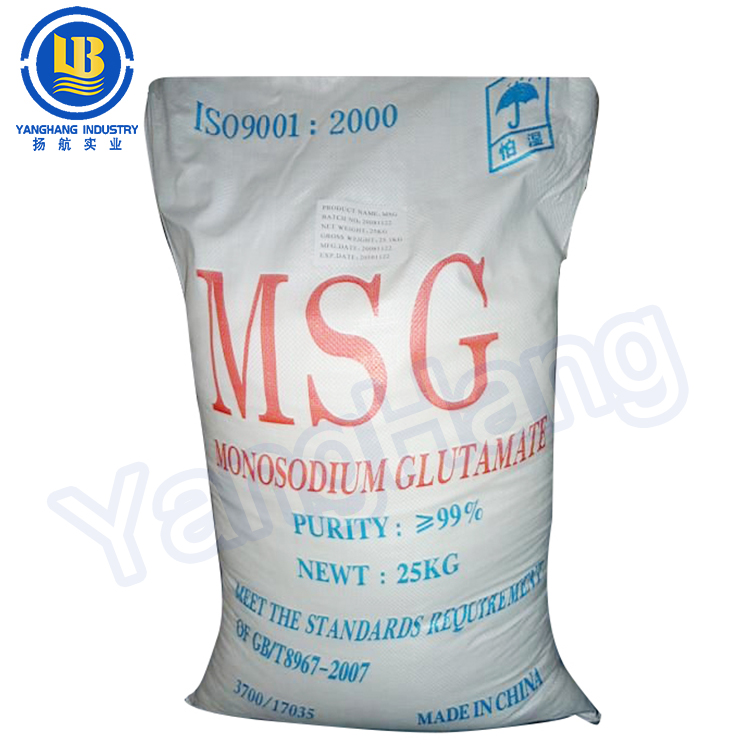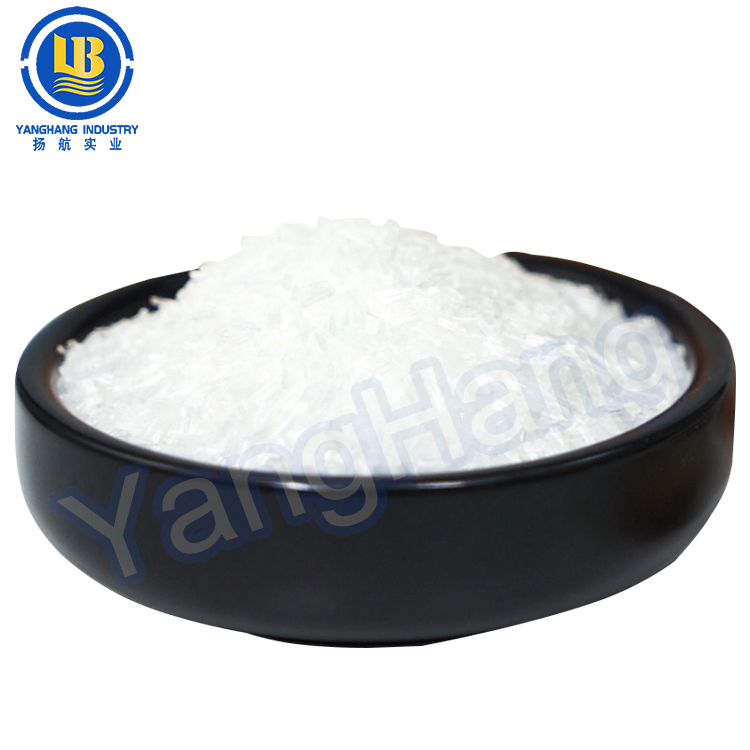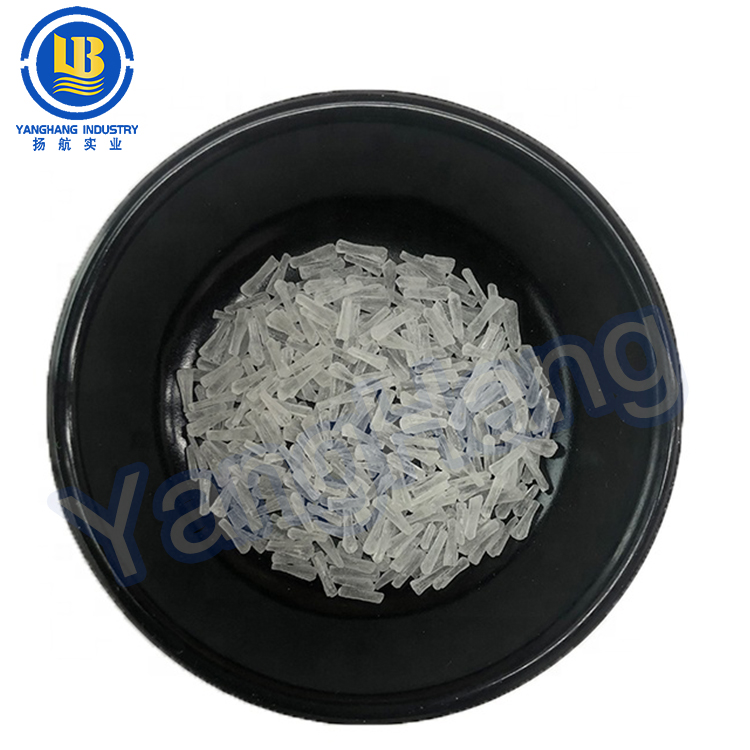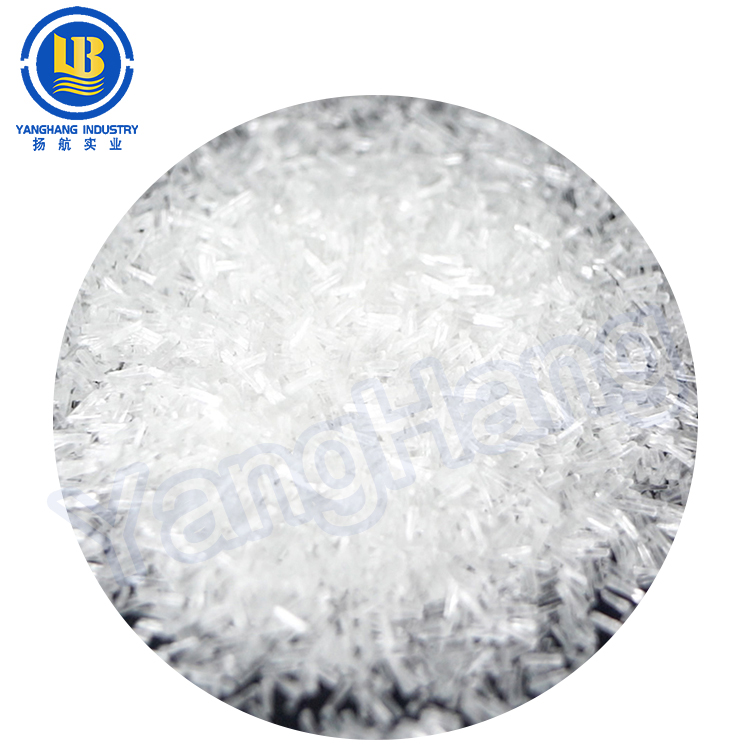Hainan Yanghang Industrial Co., Ltd.
34 years of focusing on R&D, production and sales of water treatment chemical products
 info@hnyhxd.com
info@hnyhxd.com
Sodium glutamate (C5H8NNaO4), chemical name α- Monosodium aminoglutarate is a sodium salt of glutamic acid.
In 1866, German chemist Carl Heinrich Leopold Rethausen hydrolyzed wheat bran with sulfuric acid to obtain Acidic amino acid. In 1908, Japanese scientist Dr. Kimiko Ikeda isolated the flavorful ingredient from kelp and proved that this flavorful ingredient was sodium glutamate, thus producing chemical seasoning and placing it on the market. The main ingredient of monosodium glutamate, a commonly used seasoning in daily life, is sodium glutamate. The flavoring effect of tomatoes, fermented soybean products, yeast extract, some sharp cheeses, and fermented or hydrolyzed protein products (such as soy sauce or soy sauce) can be partly attributed to the presence of glutamic acid.
Chemical formula: C5H8NNaO4
CAS Registry Number: 142-47-2/32221-81-1
EINECS login number: 205-538-1
Melting point: 225 ℃
Boiling point: 333.8 ℃
Water solubility: easily soluble in water, slightly soluble in ethanol, insoluble in ether
Appearance: White crystalline powder
Flash point: 155.7 ° C
Purpose:
Seasoning agent
When using as a seasoning agent, the general dosage is 0.2%~0.5%. In addition to being used alone, it should be mixed with nucleic acid flavorings such as ribonucleotide and inosine sodium to form a compound flavoring to improve the effect. Sodium glutamate is the most widely used freshness agent both domestically and internationally. When coexisting with table salt, it can enhance its flavor effect, and when used together with 5 '- inosine sodium or 5' - guanosine sodium, it has a multiplier effect. According to Chinese regulations, it can be used in moderation for various types of food according to production needs.
Sodium glutamate has a strong meat flavor, and monosodium glutamate can still feel its freshness when diluted to 3000 times with water. It is widely used in households, the catering industry, and food processing industries (such as soups, sausages, fish cakes, spicy soy sauce, canned goods, etc.). Sodium guanylate and sodium glutamate are used together, which have a synergistic effect and can enhance the freshness. It is also known as a freshness aid or strong monosodium glutamate.
Biochemical reagents for pharmaceutical use
Glutamic acid is widely present in the body of animals and plants, and is a naturally occurring nutritional component in food. After consumption, 96% of glutamic acid is absorbed in the body, while the rest is oxidized and excreted in the urine. Although glutamic acid is not an essential amino acid for the human body, it undergoes amino transfer with keto acid in nitrogen metabolism and can synthesize other amino acids. Glutamic acid has the effect of reducing toxins in the blood. When liver function is impaired, the ammonia content in the blood increases, causing severe nitrogen metabolism disorders and leading to liver coma. Glutamate can act with ammonia to reduce the ammonia content in the blood. In addition, brain tissue can only oxidize glutamate, not other amino acids. When glucose supply is insufficient, glutamine can act as an energy source for brain tissue, so glutamic acid is necessary for improving and maintaining brain function. In addition, it can also be used as a brain nutrient in medicine to prevent liver coma and epilepsy.
Organic synthesis intermediates
It can be used as an intermediate in organic synthesis in industry, but its proportion in the world's annual production is very small, such as in various fields such as additives, permeation membranes, silk protein modification, leather additives, biomedical materials, modified regenerated collagen fibers, etc.
Storage and transportation:
Storage method
Store in a cool and ventilated warehouse. Keep away from sparks and heat sources. Keep the container sealed. It should be stored separately from acidic substances, strong oxidizing agents, and flammable materials, and should not be mixed for storage. The storage area should be equipped with suitable materials to contain leaks.
Transportation method
Operators must undergo specialized training and strictly adhere to operating procedures. It is recommended that operators wear self-priming filter type dust mask, chemical safety goggles, anti poison penetration work clothes and rubber gloves. Avoid generating dust. Avoid contact with acids, strong oxidizing agents, and flammable substances. When transporting, it is necessary to load and unload gently to prevent damage to the packaging and containers. Equipped with leakage emergency response equipment.







